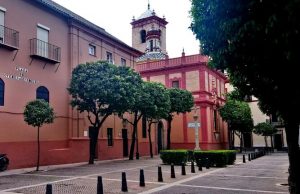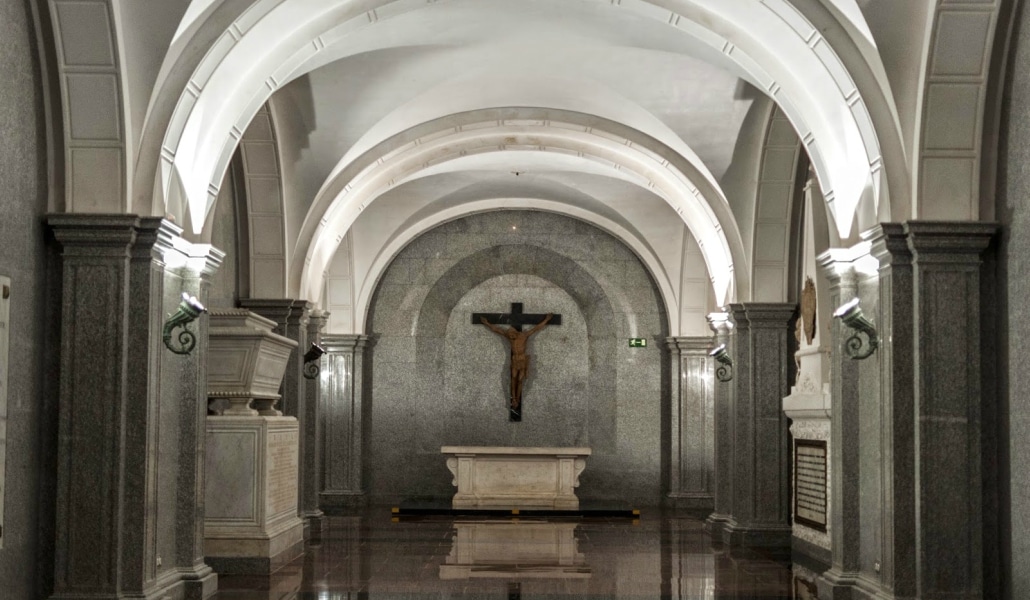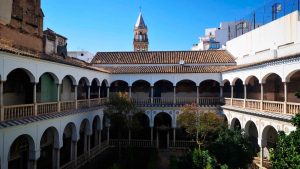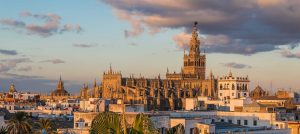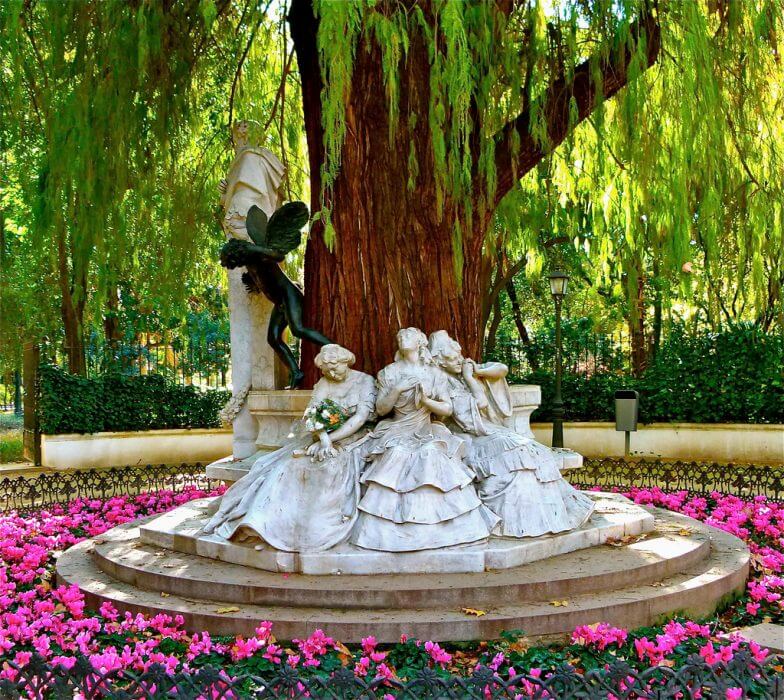The Hotel Bécquer, one of Seville’s most emblematic hotels, celebrates its 50th anniversary with a series of solidarity activities and reflections on its history and evolution. The Martínez family, who previously managed the Hotel Cécil-Oriente in Plaza Nueva, transformed the 19th century palace house of the Marqueses de las Torres de la Presa into the current Hotel Bécquer, inaugurating it in 1973. Nowadays, noble pieces of the palace itself are still preserved, such as coffered ceilings, mahogany fireplaces or wrought iron grilles of high artistic value.
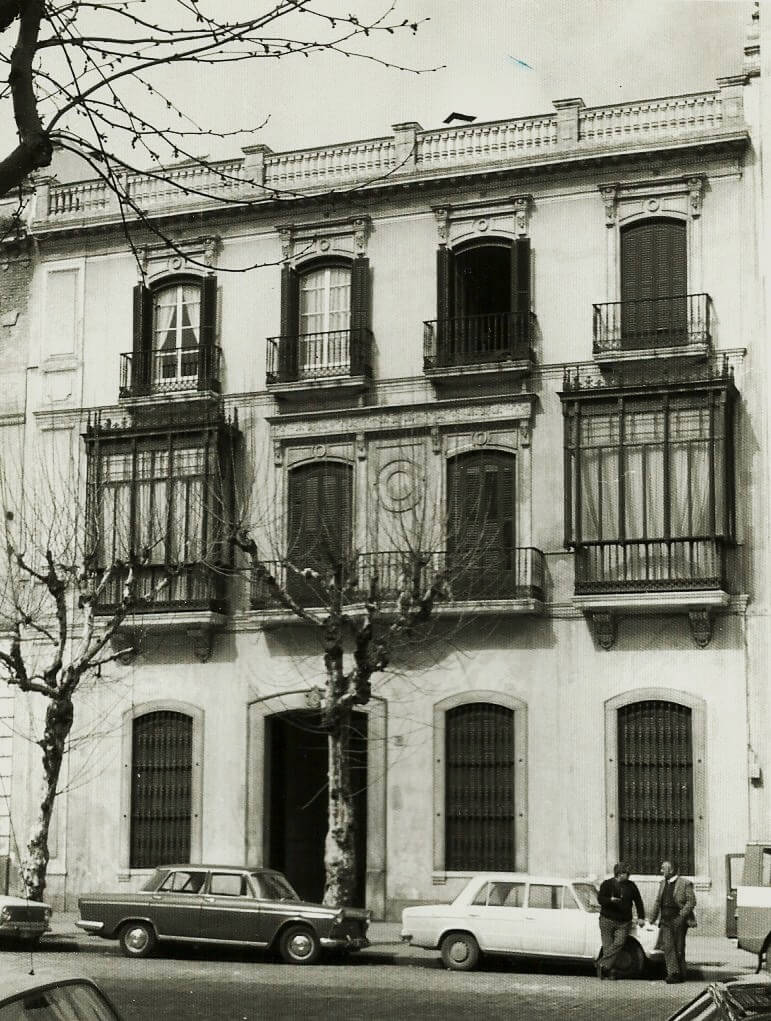
As a token of its gratitude to Sevillian society, Hotel Bécquer has launched a programme called 12 months-12 causes in which various social activities will be carried out throughout the year. Some of these causes are the collection of rubbish in the Guadalquivir River, donations to the Seville Food Bank, collaboration with the Night Brigade distributing food and clothes to homeless people in the city centre, actions to help people in need and affected by natural disasters, such as the earthquake in Turkey or those affected by the war in Ukraine, open days with the University, collaborations with the Seville Cancer Association or the Blue Bird Foundation, which helps children in poverty in Africa, etc.
The Hotel Bécquer has always been particularly sensitive to corporate social responsibility and once again shows its most social side through these actions, which contribute value to society.
LET’S TALK A LITTLE ABOUT THE POET WHO GIVES HIS NAME TO OUR DEAR HOTEL
Gustavo Adolfo Bécquer, known as a prominent Spanish poet and storyteller of the Romanticism movement, was born on 17 February 1836 in Seville and died on 22 December 1870 in Madrid. His recognition and literary prestige came after his death and the publication of his writings. His most famous work is “Rimas y Leyendas” (Rhymes and Legends), which has had a great influence on Hispanic literature. Bécquer came from a family of artists and painters, but he was inclined towards literature and poetry. His poetic style is characterised by being intimate, sincere and simple. In addition to his lyric poetry, he also excelled as a storyteller, writing legends and gothic tales. Bécquer’s literary legacy is considered fundamental in modern Spanish poetry and in the connection with the poetic tradition.
AND TO FINISH WE LEAVE YOU A ROUTE THROUGH THE SEVILLA OF BÉCQUER
1. San Lorenzo neighbourhood
The poet was born in Calle Conde de Barajas nº 26 on 17 February 1836. All that remains of his house is the façade, where a plaque commemorates him.
He was baptised in the parish church of San Lorenzo on the 25th. He studied at the Colegio de San Francisco de Paula located in Calle Jesús del Gran Poder nº 29, (there is a commemorative plaque), today the house has been refurbished for other uses. He lived for some time in the nearby Calle Potro nº 6 (his aunt and uncle’s house). Next to the parish church of San Vicente, in Calle Alfaqueque, on the corner of Mendoza Ríos, Gustavo lived with his brother Valeriano in the years prior to his departure for Madrid, the city to which the Bécquer family moved in 1841 after the death of their father.
2. Museum of Fine Arts
Visit the portrait of Gustavo Adolfo Bécquer on the first floor, room XII, dedicated to 19th century Sevillian painting.
The portrait was painted by his brother Valeriano Domínguez Bécquer in 1862. It is the best known image of the poet and we have seen it in numerous textbooks and publications. This effigy even illustrated the now defunct 100 peseta banknote for many years. It can be considered to be one of the most important works of Spanish Romantic painting: The poet with an elegant attitude has a look full of emotion that connects directly with the viewer’s gaze.
3. Pantheon of Illustrious Sevillians
Located in Calle Laraña, under the Temple of the Annunciation, the poet and his brother Valeriano are buried there. It is accessed through the Faculty of Fine Arts.
It can be visited by the guides of the University of Seville. It is necessary to make an appointment on their website.
4. Convent of Santa Inés
The convent is located on Doña María Coronel Street, in the center of the city, near the Plaza de San Pedro.
On the wall opposite the low choir, located at the foot of the central nave, we find the popular organ, one of the oldest in Seville, which the poet immortalized in the legend, “Maese Pérez the organist”. Legend about a paranormal phenomenon, the organist of the Cathedral Maese Pérez, after his death, would return on Christmas Eve to the Convent of Santa Inés, where his daughter was to play the organ.
5. Seville Cathedral
Altar of Saints Justa and Rufina The Bécquer family, Flemish nobles, arrived in Seville at the end of the 16th century to trade, and soon reached a prosperous situation among the highest Sevillian families, with their own chapel in the Cathedral of Seville. This is the chapel of Saints Justa and Rufina in the Cathedral, where the poet’s ancestors are buried. It dates from 1622, as does the grille of the chapel.
6. Church of San Vicente (Chapel of the Seven Words)
In 1884 the Economic Society of Friends of the Country, with José Gestoso at its head, requested the relevant authorities to transfer Gustavo Adolfo’s remains to Seville. In 1912 the Royal Academy decided that Valeriano should also return. On April 9, 1913, the remains of the Bécquer brothers were exhumed at the Sacramental of San Lorenzo in Madrid and were taken in a four-horse carriage to the Atocha Station. On April 10, they arrived in Seville, at the Cordoba station, where they were received by the mayor, Antonio Halcon. They were installed in an improvised mortuary chapel and, after a religious ceremony, the chapel was opened to the public. The rain prevented the transfer to the Pantheon of the University and the remains were taken to the chapel of the Seven Words, in the church of San Vicente.
7. Maria Luisa Park
The Glorieta de Bécquer, the most famous of this park, is located in front of the Plaza de España. Created in 1910, it is dominated by an impressive Cypress tree that covers and shades the entire area and is composed of the bust of the poet on a pedestal, based on the portrait made by his brother Valeriano, behind three female marble figures lying on a bench: the “illusioned love”, the “possessed love” and the “lost love”, representing the rhyme “The love that passes”. Next to them are two recumbent bronze figures representing the “wounded love” and the other is of a young Cupid or sweetheart as the love that wounds. This monument is a national reference of the romantic style and period.





